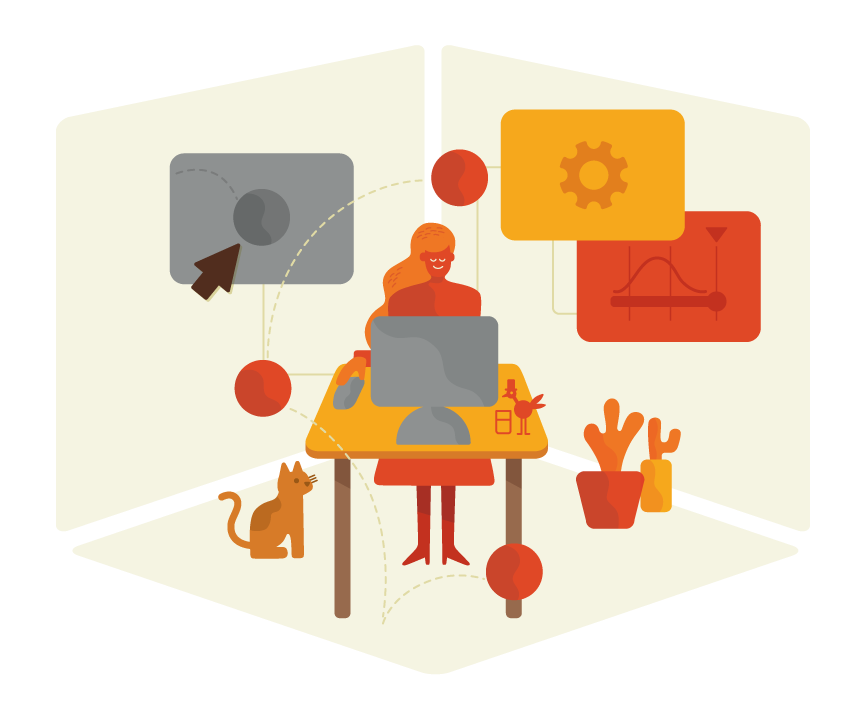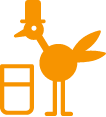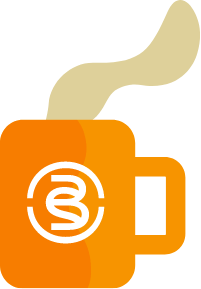
Animation
Animation lies at the heart of advertising. People have been relying on cartoons and animation to tell stories and sell products for decades, from Mickey Mouse to Mr. Clean. Whether you have a story to tell, products to explain, or just want to add motion to your brand: we can animate it! It’s a technicolor world out there, and you’ve got to stand out among the crowd!

THE ANIMATION PROCESS
THE ANIMATION PROCESS

It’s not just mascots and brand ambassadors that make this technique worthwhile. Animation can set your business apart from the rest by creating memorable content! Brand recall is extremely important in advertising, and adding a little motion can get you there. There isn’t a single industry that can’t benefit from it! Our animation department uses the newest software to build 2D and 3D animation from scratch, creating bespoke content that your potential customers will remember long after they’ve scrolled on.
Motion graphics and animation have been used to sell products and services for decades. Their use has shifted from cartoons and children’s programming in the early years, into the marketing art form that captivates audiences today. The influence of animation can still be seen today, and characters like Mickey Mouse, the Jolly Green Giant, and the Kool-Aid Man show that they are still extremely effective. Whether you want to tell a story, create a fun mascot, animate your logo, or add eye-catching motion to your social media, we have experienced artists and animators to bring them to life!
It’s not just mascots and brand ambassadors that make this technique worthwhile. Animation can set your business apart from the rest by creating memorable content! Brand recall is extremely important in advertising, and adding a little motion can get you there. There isn’t a single industry that can’t benefit from it! Our animation department uses the newest software to build 2D and 3D animation from scratch, creating bespoke content that your potential customers will remember long after they’ve scrolled on. Our in-house animators work closely with account executives, clients, and other creatives to build quality motion graphics for every platform, including social media, television, websites, and more.
From the storyboard all the way to usable content, we have the tools and knowledge to guide clients through the process to produce motion graphics and animation that sets your brand apart from the competition. Our team consists of industry experts using the best software available! Even if your brand doesn’t have grand ambitions for animation, simple motion graphics can elevate your business. It’s a technicolor world out there, and you’ve got to stand out among the crowd!
Our in-house animators work closely with account executives, clients, and other creatives to build quality motion graphics for every platform, including social media, television, websites, and more.
From the storyboard all the way to usable content, we have the tools and knowledge to guide clients through the process to produce motion graphics and animation that sets your brand apart from the competition. Our team consists of industry experts using the best software available! Even if your brand doesn’t have grand ambitions for animation, simple motion graphics can elevate your business. It’s a technicolor world out there, and you’ve got to stand out among the crowd!
SOME OF OUR FAVORITE PROJECTS
Load More

FAQ

Cajun
Crawfish
Cajun Crawfish is a unique operation that called for a unique solution. Burning Stick Creative helped Cajun Crawfish look at their e-commerce operation in new…
VIEW CASE STUDY
Louisiana
Orthopaedic
Specialists
Louisiana Orthopaedic Specialists opened their doors in 2009, and their brand recognition and customer satisfaction put them leagues ahead of their competition. What started as...
VIEW CASE STUDY
Vermilionville
Vermilionville, a subsidiary of Bayou Vermilion District, is one of the crown jewels of Acadiana. It is iconic, a historical landmark right in our own backyard with tons of educational and recreational activities.
VIEW CASE STUDY
Our Lady
of Lourdes
During height of the COVID-19 pandemic, Our Lady of Lourdes and their parent company Franciscan Missionaries of Our Lady Health System, needed to keep physicians connected to patients within their hospital system.
VIEW CASE STUDY
Cajun
Crawfish
View Case Study
Louisiana
Orthopaedic
Specialists
View Case Study
Vermilionville
View Case Study
Our Lady
of Lourdes
View Case Study
